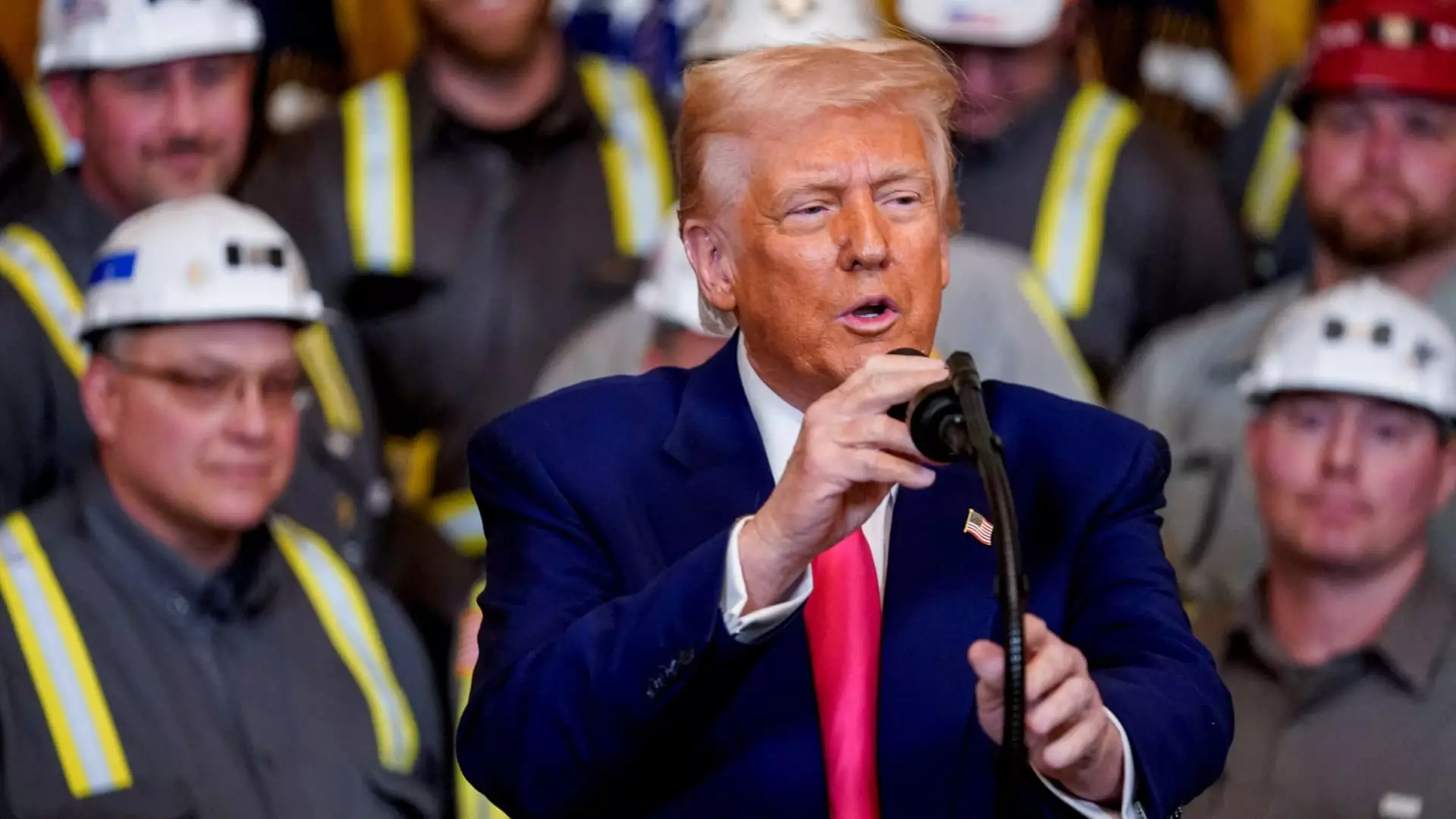In a bold yet misguided move, former President Donald Trump has championed the revival of the coal industry under the guise of fueling America’s tech sector and its burgeoning demand for energy. Issuing an executive order aimed at identifying opportunities for coal-powered generation to support artificial intelligence (AI) data centers, Trump is clinging to a bygone era. The crux of this initiative lies not in environmental sustainability but rather in appealing to coal miners and constituents who feel threatened by the industry’s decline. It is a classic case of a political figure seeking to placate a divided base, yet, it stands on shaky ground.
The reality is stark; coal’s time has passed. With only 16% of U.S. electricity generation coming from coal in 2023—a staggering drop from 51% in 2001—it is clear that the market has overwhelmingly shifted toward cleaner energy sources. Trump’s plan, while promising a lifeline to coal workers, risks entrenching the country in outdated practices instead of looking forward to innovative solutions. This is not merely a failure in vision; it represents a step backward for American energy policy.
Environmental Ethics vs. Energy Needs
Trump’s rhetoric surrounding coal emphasizes its role as a “backup” energy source, which flies in the face of the tech industry’s extensive investments in renewable energy. Tech giants like Amazon have poured billions into sustainable energy projects, aligning themselves with broader environmental goals to combat climate change. By advocating for coal, Trump positions himself directly against these aims, creating friction between two powerful business sectors—technology and energy.
The notion of utilizing “clean coal” only illustrates the absurdity of the claim. Coal is still one of the most carbon-intensive energy sources available, producing more CO2 emissions per kilowatt hour than any other power generation method, except for oil. While tech companies like Amazon hint at the necessity of an “all-of-the-above” energy strategy, they tacitly understand that leaning on coal as a viable option would set them back years in their decarbonization goals.
Natural Gas: The Overlooked Solution
In the swirling debate over energy solutions for AI data centers, one underappreciated factor emerges—natural gas. Its lower carbon emissions compared to coal often make it a better alternative that can accommodate the needs of expanding tech operations without compromising environmental responsibility. Not only is natural gas the more pragmatic choice for energy requirements, but it also mutes some of the urgency surrounding coal’s beleaguered state.
Interestingly, Trump’s executive order seems to serve as a “dog whistle” to coal miners but overlooks the fact that energy transitions happen through market dynamics and innovation rather than nostalgic calls to revive dead industries. By focusing on coal, Trump not only alienates the tech sector but also risks missing out on the greater potential for energy diversity and sustainability through natural gas and renewables.
Challenges Ahead for Coal
While Trump insists on coal as a key power source for AI data centers, analysts and industry experts increasingly warn that the economic viability of coal is crumbling. Reports from institutions indicate that coal plants are retiring at an unprecedented pace and face intense competition from renewables and natural gas. Even the coal CEOs, like Peabody Energy’s James Grech, indicate that prolonging the life of coal plants may only serve as a stopgap measure rather than a sustainable solution.
As America pushes toward a future where electricity demand is projected to surge by 40% within the next 20 years, relying on coal could mean jeopardizing grid reliability in a climate crisis. Utilities have already begun halting coal closures, which short-circuits the necessary transition toward cleaner energy. This renewed emphasis on coal serves only to delay genuine progress toward the energy systems we need for a sustainable future.
The Dilemma of Data Centers
There’s no denying that data centers have become energy-hungry beasts in our increasingly digital world. Their demand for power is skyrocketing, yet deploying coal to satiate this appetite is like trying to douse a fire with gasoline. Such an approach not only contradicts environmental goals but also minimizes the importance of technological innovation in energy efficiency.
Tech leaders are aware that their long-term plans must focus on sustainable growth and environmental stewardship. By giving coal a seat at the table, Trump undermines the very principles that have fueled the growth of the tech industry. The pressure to meet increasing energy demands using outdated methods—in this case, coal—does no favors for public perception, championing a more sustainable future while inviting skepticism from conscientious consumers.
The push to reinvigorate the coal industry, as articulated by Trump, may stem from a genuine concern for American jobs but ultimately teeters on the edge of an outdated energy paradigm. Harnessing coal for the future needs of the tech industry may align with the desires of a declining workforce but stands in stark contrast to the direction in which global energy trends are heading. Emphasizing coal disguises a larger truth: the path to sustainable energy does not lie in nostalgia but in adaptation, innovation, and a willingness to embrace cleaner alternatives. As the fight over America’s energy future continues, clinging to coal risks condemning the nation to a fate of stagnation rather than progress.

